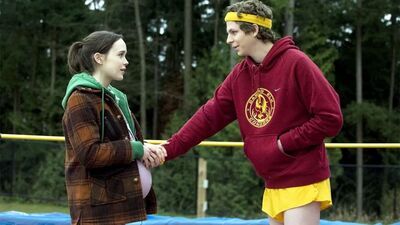Roger’s very first Top 10 list for The Chicago Sun-Times, his home outlet for decades, listed a lot of movies that were probably common sights on other people’s lists, including “The Graduate,” “Blowup,” “Ulysses,” “A Man for All Seasons,” and the eventual Oscar winner “In the Heat of the Night.” It also included “Bonnie and Clyde,” which would be considered an automatic inclusion now, with the fullness of time deeming it a classic, but was as controversial in its day as something like “Fight Club” or “A History of Violence,” and Peter Watkins’ “The War Game,” a 1966 pseudo-documentary about the aftereffects of nuclear war on England that was originally a 1965 TV movie but did not air because the BBC considered it too disturbing.
The following year is when things started to get interesting. In addition to films you wouldn’t be at all surprised to see, such as “2001: A Space Odyssey” (divisive, but a huge hit and a multiple Oscar-nominee), and the Joanne Woodward drama “Rachel, Rachel” (directed by Paul Newman) and the eventual best picture winner “Oliver!,” Roger listed “Romeo and Juliet” (the flower child-baiting Franco Zefferelli version, which cast actual teenagers as the characters) and “The Producers” (now a consensus pick as the funniest American film from that year, but which at the time was considered about as respectable as something like “Bridesmaids” or “Elf”). Roger also put John Cassavetes’ debut as a director “Faces” on his ten best list, even though it barely played in Chicago or anywhere else, in an early example of him using his influence to get people interested in something they hadn’t already heard of.
In most years after that, Roger would list one or more movies that probably made readers think, “Huh, that’s interesting—I didn’t expect to see that one on there.” In 1971, that movie was likely “Fellini Satyricon,” which got a wide release for an R-rated Italian film but was controversial for its explicit depiction of bacchanals (once an unimpeachable art-house favorite, Federico Fellini’s P.T. Barnum-of-the-arthouse routine from the late ‘60s through the early ‘70s was starting to drive even his most loyal fans away, and “the emperor has no clothes”-type pieces were starting to appear; Roger was making a statement by including this one). In 1973, Roger listed “The Exorcist” (popular but controversial, and widely despised among mainstream critics for its graphic content and relentless urge to shock); “American Graffiti” (respected, well-reviewed and a big hit, but by no means a consensus instant-classic) and “The Friends of Eddie Coyle,” a marvelously lived-in lowlife thriller that’s a bit under-the-radar even today, unless you’re a huge fan of crime fiction (the novel was by George V. Higgins, one of Roger’s favorite crime fiction authors).

